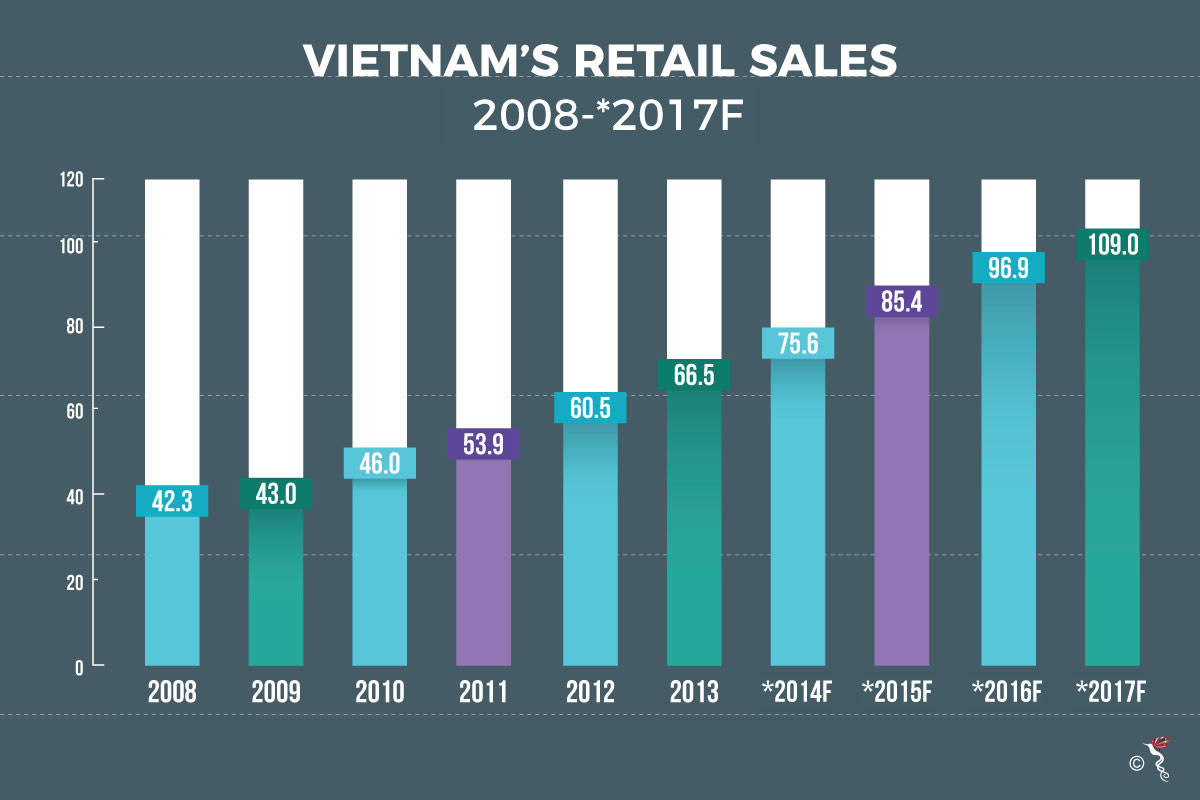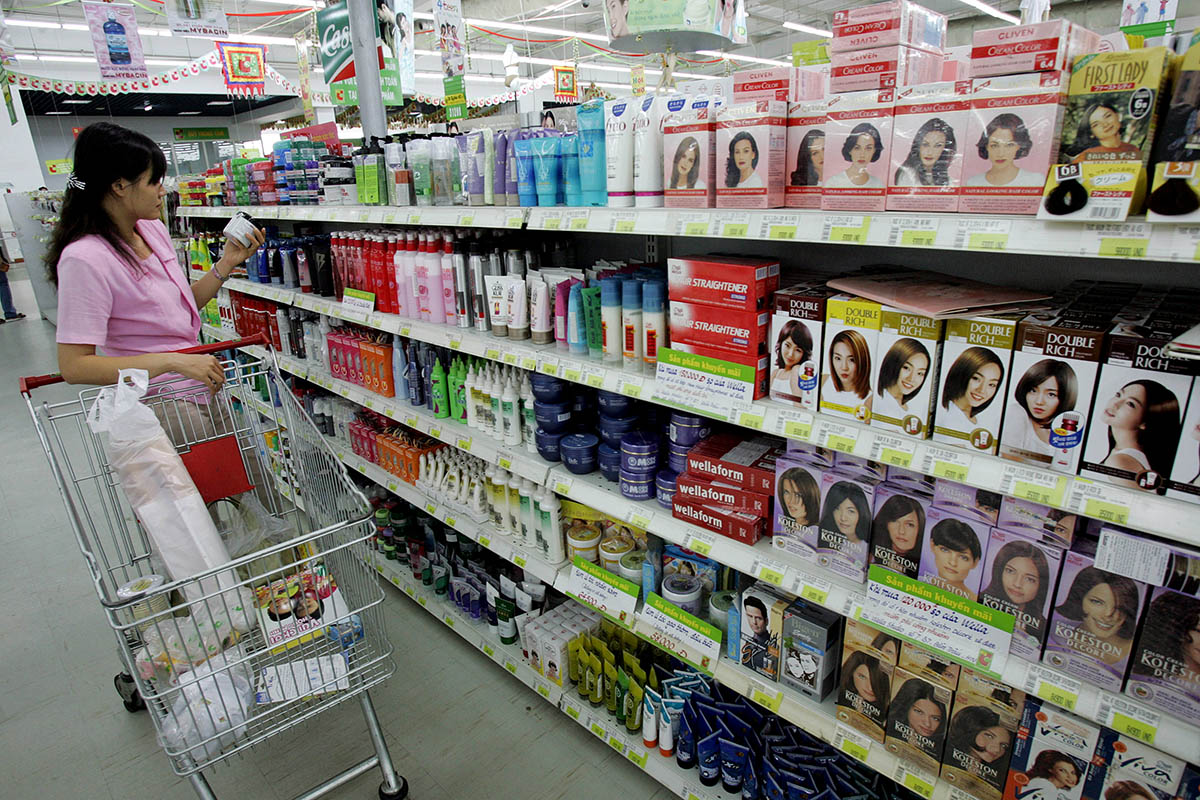In 2017, Vietnam’s retail industry growth totalled US$129.6 billion rising 10.9% from the year before. This covered all sections of retail, including fashion, food & beverage, and convenience stores.
Key to this growth, especially in supermarket and convenience stores, is foreign investment, which has seen large players enter the market since 2007, and who still aim to expand their slice of the pie.
Foreign investors currently own 40% of the supermarket and convenience store market share, and are continuing to increase their investments, encouraged by government policy and rising incomes especially in the bigger cities. Ho Chi Minh City alone, for instance, already hosts 91 foreign-owned convenience stores, out of a total of 207.
Retail has seen a huge jump since 2007 partly because of Vietnam’s open-trade policies, including World Trade Organisation (WTO) membership in 2008 and other regional trade agreements with China, South Korea, Australia and Japan.
Participation in the WTO caused Vietnam to open its doors to wholly-owned foreign companies to operate independently there in 2009, then allowing businesses to set up shop with 100% foreign capital in 2015.
South Korea's Lotte started operating there in 2008 and now owns 13 stores to date; it also plans to add another 13 this year. Meanwhile, Japanese retailer Aeon opened its first shopping complex in 2014, with a US$100 million investment, and now owns four other malls in Vietnam. A fifth, set to be constructed 2019, will cost Aeon US$180 million.
Most recently, Son Kim Group, which also owns interests in property, fashion and media, announced that it aims to put up 2,000 conveniences stores by 2028. The convenience store segment is projected to see retail sales grow from 25% to 45% by 2020.

*Forecast data from 2014 shows an upward trend in retail sales till 2017. This trend has proven to be accurate.
Source: Economist Intelligence Unit
The benefits to Vietnam have been clear, with more jobs created as a result of these store openings. From a consumer point of view, although more foreign stores does not necessarily result in cheaper goods because of an additional 20-30% markup in prices, many of them view it as a trade-off for better food quality and hygiene.
Personal consumption still accounts for 70% of Vietnam's GDP, despite traditionally conservative spending habits all around. Rising middle-class numbers with higher disposable incomes, however, may be the cause. Currently middle-class employees account for 25% of all workers based in Vietnam.
The influx of foreign retailers however has been a worrying trend for local retailers struggling to catch up. Even though they still hold the majority of retail outlets, with 79% of supermarkets and 70% of convenience stores, foreign retailers could usurp them if they do not have the capital, infrastructure and workforce to maintain their market lead.
Domestic retailers’ market advantage, in terms of local industry know-how, will only last so long as their global competitors remain new to the market. Many global supermarket chains, however, have already been there at least 10 years now.
For Vietnam’s retail environment to remain sustainable over the long term, there needs to be balancing measures put in place by the government. The current retail environment is not sustainable if it doesn’t provide for long-term transfer in skills and technology, doesn’t take into account environmental factors and doesn’t consider the possible negative effects of too much foreign capital inflow.
Addressing this would require the government to perform the following for a start:
Build frameworks that enable local retailers to access capital and know-how more easily, while also providing a legal and administrative framework for their business ideas to materialise and take off
Designate special economic zones which provide for the free flow of goods, services and labour without encroaching on local retailers’ market share
Ensure consistent macroeconomic policies, so that any risk of sudden large foreign capital inflows can be managed easily
Scaling back on foreign direct investment-centric policies is not so much the aim, but rather maximising the efficiency of such policies in the long term.
Recommended stories:
